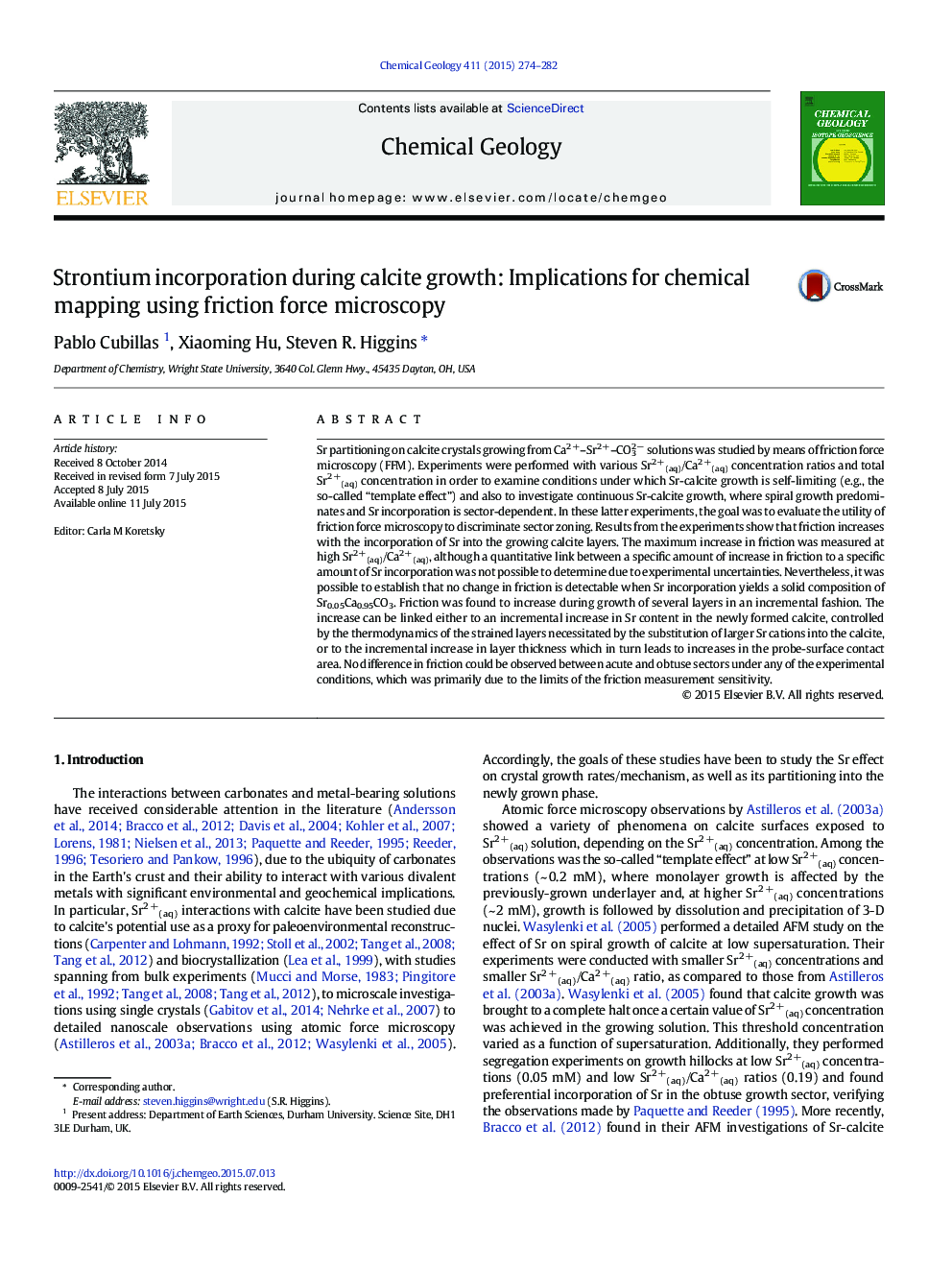| Article ID | Journal | Published Year | Pages | File Type |
|---|---|---|---|---|
| 6436351 | Chemical Geology | 2015 | 9 Pages |
â¢Sr-bearing monolayers displayed 15% higher friction compared to calcite substrate.â¢Acute and obtuse sector zoning of Sr was not detectable using FFM.â¢The detection limit for the FFM method is about 5% Sr in Sr-bearing overgrowths.
Sr partitioning on calcite crystals growing from Ca2Â +-Sr2Â +-CO32Â â solutions was studied by means of friction force microscopy (FFM). Experiments were performed with various Sr2Â +(aq)/Ca2Â +(aq) concentration ratios and total Sr2Â +(aq) concentration in order to examine conditions under which Sr-calcite growth is self-limiting (e.g., the so-called “template effect”) and also to investigate continuous Sr-calcite growth, where spiral growth predominates and Sr incorporation is sector-dependent. In these latter experiments, the goal was to evaluate the utility of friction force microscopy to discriminate sector zoning. Results from the experiments show that friction increases with the incorporation of Sr into the growing calcite layers. The maximum increase in friction was measured at high Sr2Â +(aq)/Ca2Â +(aq), although a quantitative link between a specific amount of increase in friction to a specific amount of Sr incorporation was not possible to determine due to experimental uncertainties. Nevertheless, it was possible to establish that no change in friction is detectable when Sr incorporation yields a solid composition of Sr0.05Ca0.95CO3. Friction was found to increase during growth of several layers in an incremental fashion. The increase can be linked either to an incremental increase in Sr content in the newly formed calcite, controlled by the thermodynamics of the strained layers necessitated by the substitution of larger Sr cations into the calcite, or to the incremental increase in layer thickness which in turn leads to increases in the probe-surface contact area. No difference in friction could be observed between acute and obtuse sectors under any of the experimental conditions, which was primarily due to the limits of the friction measurement sensitivity.
Graphical abstractDownload high-res image (293KB)Download full-size image
